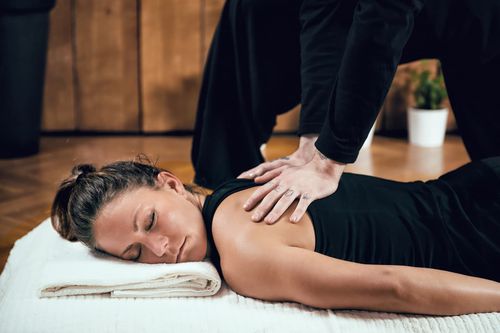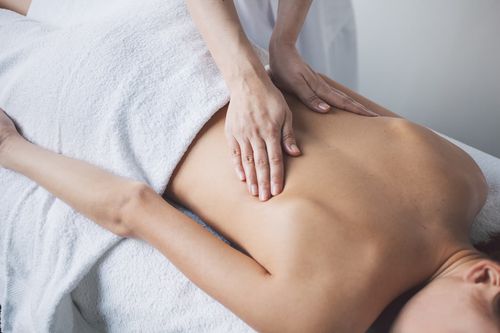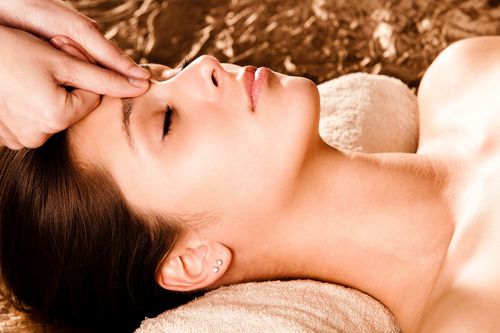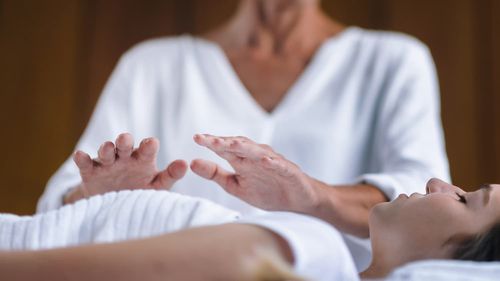What is Shiatsu?
Shiatsu massage therapy is a traditional hands-on healing therapy that was primarily developed in Japan over the last 100 years. It was based on the traditional Japanese amma massage. Shiatsu means "finger pressure" and uses natural body weight like fingers, thumbs, forearms, elbows, knees and feet in applying pressure to specific points in the body. It moves from one point to another point in a rhythmical sequence. It uses rocking movement, stretching and joint rotations in restoring the body's healthy flow of energy ("ki"). Shiatsu addresses the body as a whole rather than focusing on one area where the symptoms are most obvious.
The main goal of Shiatsu is to rebalance the ki energy along with the meridians or energy channels. The surface touch accesses the meridians by using the points on the surface called "Tsubo". The excessive (Jitsu) or deficient (Kyo) ki is identified as the practitioner controls the movement of the body.
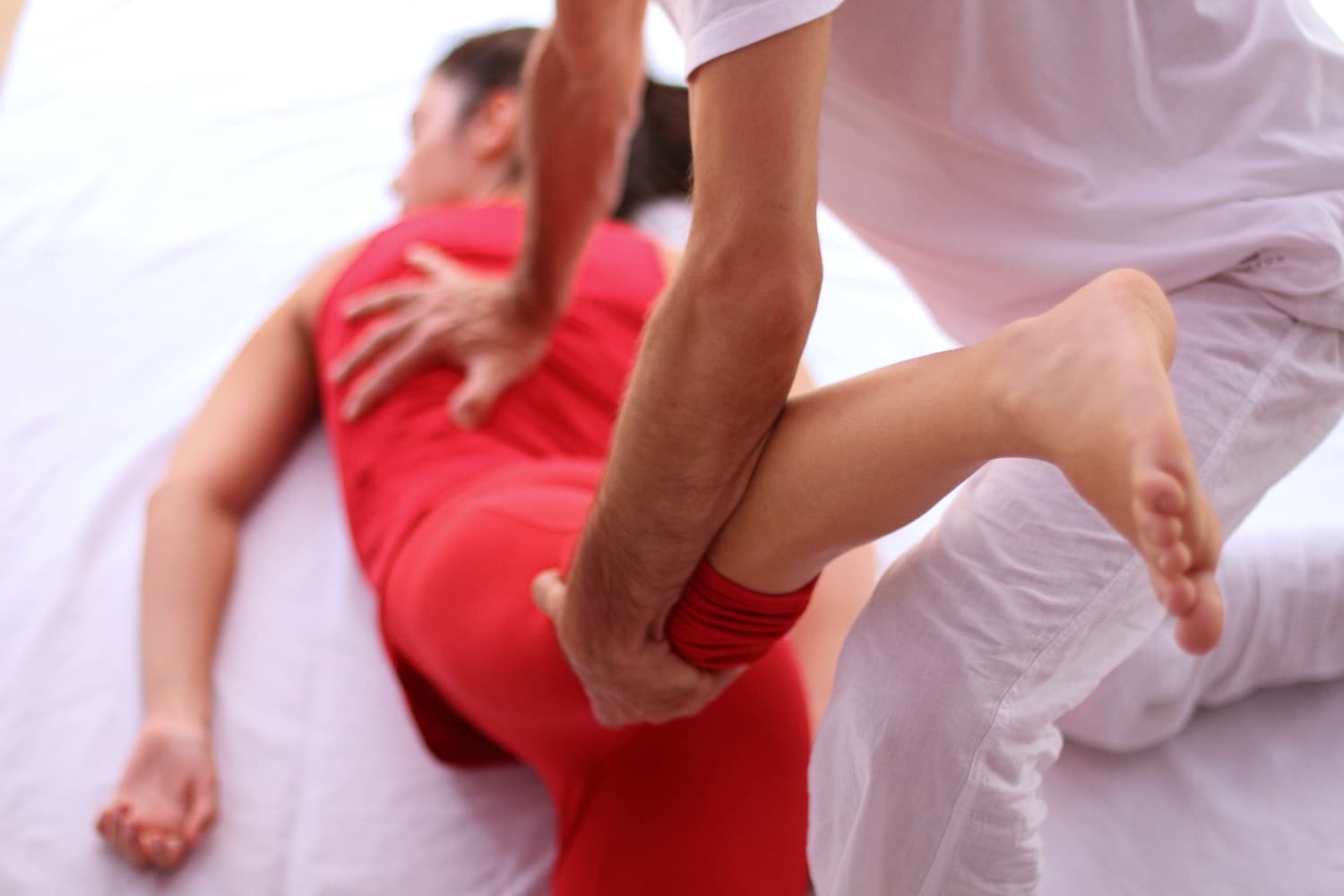
How Does Shiatsu Work?
Shiatsu starts with the practitioner examining the client's pulse, tongue, face, hara (the stomach area), and the spinal column to determine the kind of treatment to be used. The client remains fully clothed and may opt to lie or sit down throughout the treatment. A session typically lasts for about an hour.
Practitioners use fingers, thumbs and palms in applying pressure in a continuous and rhythmic sequence. Shiatsu incorporates techniques like pressure, holding, rubbing, heating, stretching, or a combination which can be firm and deep, but applied with sensitivity. These techniques give an all-over treatment, aiming for the treatment of the patient on a very holistic level.
What are the Benefits of Shiatsu?
Shiatsu promotes the natural flow of ki energy and facilitates healing. According to ancient Japanese tradition, blockages in the flow of ki energy may lead to various illnesses or conditions. Scientific theory shows that shiatsu massage helps calm the sympathetic nervous system, which, in turn, stimulates blood and lymph circulation, reduces stress and lessens the severity of pain. It also increases energy, promotes recovery from injuries and stimulates the digestive system. This bodywork is an effective treatment for a variety of conditions, including:
- Arthritis
- Back pain
- Constipation
- Headaches
- Joint pain and reduced mobility
- Insomnia
- Menstrual problems
- Premenstrual syndrome
- Neck and shoulder pain
- Sciatica
- Sinus problems
- Whiplash
- Symptoms of asthma
- Anxiety
- Fatigue
What Can You Expect From Shiatsu?
A one-hour shiatsu massage involves firm, manipulative techniques that work deep into the muscles. It is performed without body oils, creams or lotions, with the client lying fully clothed on a padded mat or massage table. The client may opt to sit on a chair if it makes them more comfortable.
Because the goal of the therapist is to loosen up the tight muscles and free the blocked ki, they need to apply constant pressure to the problem areas. Some shiatsu styles involve the application of pressure with the thumbs, fingers and palms. If the client prefers the bodywork to be more intense, the practitioner can apply advanced techniques using their knuckles, elbows, feet and knees in addition to their fingers and palms.
Before a shiatsu session, the client is advised not to eat anything heavy but drink plenty of water to stay hydrated. People with acute and chronic pain are advised to receive treatment at least two or three times a week. If you simply want to incorporate it into your wellness routine to maintain optimal health, getting a massage once a month will suffice.
